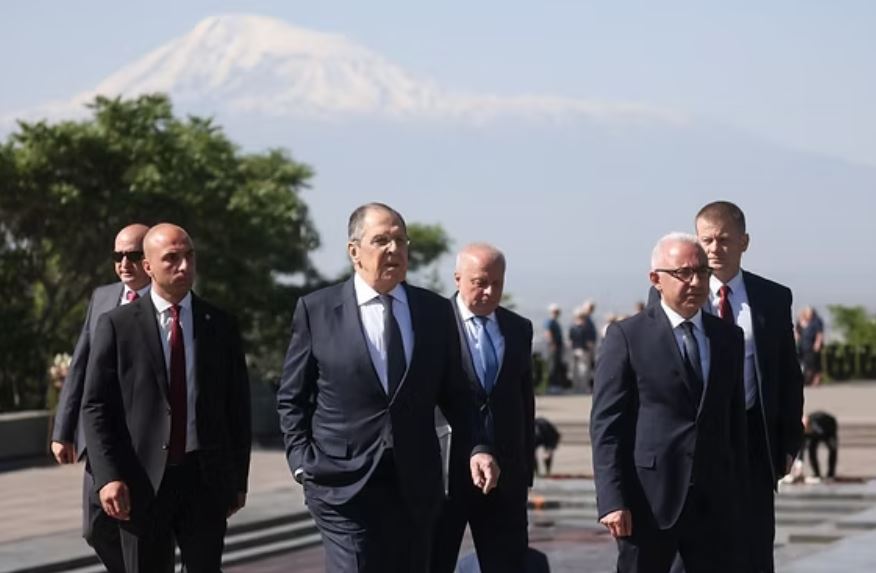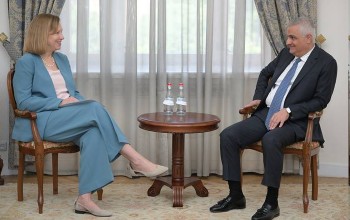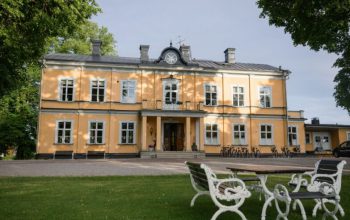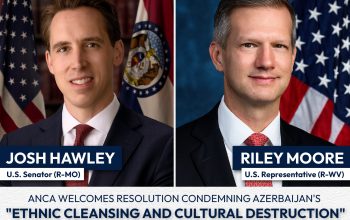Russian Foreign Minister Sergey Lavrov paid a two-day visit to Armenia on May 20–21, holding wide-ranging talks with Armenian Foreign Minister Ararat Mirzoyan and reaffirming Russia’s longstanding strategic ties with Armenia. The visit, marked by both symbolism and substance, came amid growing tensions between Moscow and the embattled Pashinyan government, whose erratic foreign policy and dismissive rhetoric toward Armenian national identity have provoked concern at home and abroad.
Lavrov’s arrival in Yerevan coincided with the release of a symbolic image by the Russian Foreign Ministry showing the Russian diplomat—who has Armenian heritage through his father’s side (surname Kalantaryan)—walking toward the Mother Armenia monument with Mount Ararat towering in the background. The image stood in stark contrast to recent remarks made by Prime Minister Nikol Pashinyan, who criticized the symbolism of Ararat and warned against using it in Armenian state policy or military doctrine.
In an interview just days earlier, Pashinyan claimed that references to historic Armenian symbols such as Mount Ararat endanger Armenia’s ability to form military partnerships and acquire modern weaponry. He declared that Armenia should abandon the “Ararat narrative” and instead embrace Mount Aragats as the symbol of the republic’s defensible borders. “We cannot build a strong army under the Ararat narrative,” Pashinyan said. “That path leads to isolation and destruction.”
The timing of Lavrov’s photo—with Ararat as a backdrop—was widely interpreted as a quiet rebuke of the Pashinyan administration’s increasingly revisionist and defeatist messaging. While Moscow showcased enduring respect for Armenia’s historical identity, the Armenian leadership appeared determined to erase it under the guise of diplomatic pragmatism.
At the joint press conference with Mirzoyan, Lavrov reinforced Russia’s commitment to strategic partnership, emphasizing deepening cooperation on economic, security, and interregional fronts. The two ministers discussed the implementation of top-level agreements and preparations to open a Russian Consulate General in Kapan—a move viewed by many as a stabilizing counterweight to the Pashinyan government’s reckless policies in Armenia’s southern Syunik province.
Mirzoyan promoted the government’s “Crossroads of Peace” initiative, describing it as a framework for regional connectivity and cooperation. However, the plan has come under criticism for offering theoretical economic benefits without adequate security guarantees—especially given the ongoing threat from neighboring Azerbaijan and the lack of trust in external enforcement mechanisms.
In addressing broader societal concerns, Mirzoyan acknowledged rising migration pressures and called for joint solutions. The growing exodus of citizens, however, is viewed by many as a direct consequence of the Pashinyan administration’s political missteps and declining public confidence in Armenia’s future.
Lavrov also noted preparations for the next Russia-Armenia Interregional Forum, which will promote cooperation between local governments, cultural organizations, and economic sectors. “These practical efforts strengthen the foundation of our allied and strategic partnership,” he stated.
On regional security, Lavrov reaffirmed Russia’s support for Armenia’s participation in the Collective Security Treaty Organization (CSTO) and stressed the importance of shared defense capabilities. “This year marks 30 years since the establishment of Russia’s military base in Armenia, a key pillar of the country’s national security,” he said. Lavrov urged that defense cooperation be strengthened further, building on the “rich experience accumulated over decades.”
These statements were particularly notable given the Pashinyan administration’s recent decision to “freeze” Armenia’s involvement in the CSTO, a move widely seen as political theater aimed at placating Western backers while exposing the country to increased regional vulnerability.
Lavrov also addressed the Armenian government’s rejection of a proposed CSTO observer mission following Azerbaijan’s 2022 attacks. He noted that the offer was declined in favor of a European Union mission—raising questions about the current administration’s strategic judgment. “I don’t know what you would consider an appropriate response, but there was one—timely and in accordance with our allied commitments,” Lavrov said pointedly.
On the topic of Nagorno-Karabakh (Artsakh), Lavrov referenced the October 2022 Prague Declaration, in which Armenia, under Pashinyan’s leadership, agreed to base future negotiations on the 1991 Alma-Ata Declaration—effectively recognizing Artsakh as part of Azerbaijan. Lavrov emphasized that this marked a sharp departure from prior frameworks and noted that the issue had historically been left open for future resolution.
Lavrov also responded to criticism regarding the use of Russian-supplied weapons by Azerbaijan in its September 2023 assault on Artsakh. He reminded reporters that Armenia has long relied on Russian weaponry, including during the First Karabakh War. “Russian weapons are used all over the world—they’re even on Mozambique’s flag,” he said, pushing back against selective outrage from Pashinyan-aligned media.
Notably, Lavrov revealed that no Armenian government, including the current one, had ever formally requested that Russia recognize Artsakh’s independence—underscoring a legacy of strategic ambiguity that now appears to have backfired.
As speculation continues about Armenia’s geopolitical shift, Mirzoyan sought to reassure observers, stating, “Armenia has not applied for European Union membership, and no such negotiations are underway.” The statement came amid growing domestic concern that the government is trading historic alliances for superficial diplomatic gestures with no tangible security or economic return.
Lavrov’s visit was also met with protests by the pro-European “For the Republic” party. Activists hung banners depicting Russian President Vladimir Putin in handcuffs with the word “killer” written in Armenian, Russian, and English. The display, staged on Kievyan Bridge and outside the Russian Embassy, drew swift condemnation from Russian officials.
Alexey Chepa, First Deputy Chairman of the Russian State Duma’s Committee on International Affairs, described the protest as a “provocation” and called on Armenian authorities to take action. “Those who hung insulting posters targeting President Vladimir Putin must be punished in the harshest terms,” Chepa told NEWS.ru.
As Russia reasserts its role in the region and signals continued support for Armenia’s sovereignty and cultural identity, the Pashinyan administration appears increasingly isolated—both strategically and ideologically. While Lavrov’s visit demonstrated Moscow’s willingness to preserve and deepen the partnership, it also cast a spotlight on Yerevan’s wavering commitments and the growing disconnect between the Armenian state and the values it once upheld.




